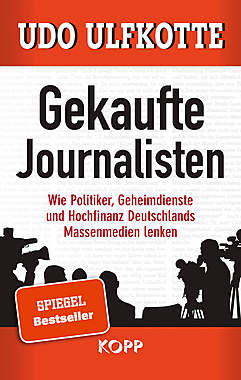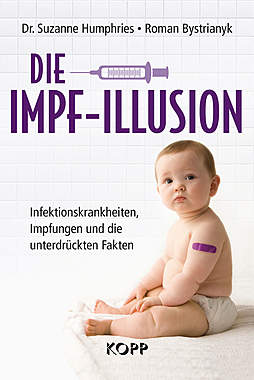- Bei Eichelburg schreibt einer was bzgl fertigen ReservewÀhrung???? - neo, 02.09.2007, 00:13
- Re: Reserve-Demokratie - Tassie Devil, 02.09.2007, 03:29
- Re: Reserve-Demokratie - Miesespeter, 02.09.2007, 13:41
- Re: Ja! Lebensmittelmarken, gedeckt durch Lebensmittel... (o.Text) - Hyperion, 02.09.2007, 10:57
- Re: Bei Eichelburg / au Mann..... - Boardmaster, 02.09.2007, 16:04
- Re: Eichelburg und Hannich.......... - ottoasta, 02.09.2007, 16:25
- @ottoasta: eigene Erfahrungen? - fridolin, 02.09.2007, 17:18
- Re: meine Erfahrung heisst: 2+2 zusammenzÀhlen......... - ottoasta, 02.09.2007, 19:18
- Re: meine Erfahrung heisst: 2+2 zusammenzÀhlen......... - dottore, 02.09.2007, 20:15
- Re: Keine Erfahrung, aber Lernbegier: - Mephistopheles, 02.09.2007, 21:59
- Dann wÀren wir deren Eigentum, Eigentum verpflichtet... - LenzHannover, 03.09.2007, 00:38
- Re: Sklavenneulinge - Tassie Devil, 03.09.2007, 08:11
- Dann wÀren wir deren Eigentum, Eigentum verpflichtet... - LenzHannover, 03.09.2007, 00:38
- Re: Feedback 2................. - ottoasta, 03.09.2007, 22:29
- Re: Feedback 2................. - dottore, 05.09.2007, 11:42
- Re: Keine Erfahrung, aber Lernbegier: - Mephistopheles, 02.09.2007, 21:59
- Re: meine Erfahrung heisst: 2+2 zusammenzÀhlen......... - albert, 03.09.2007, 01:18
- Re: Ich, Otto, ich - Tassie Devil, 03.09.2007, 08:55
- Re: meine Erfahrung heisst: 2+2 zusammenzÀhlen......... - dottore, 02.09.2007, 20:15
- Re: meine Erfahrung heisst: 2+2 zusammenzÀhlen......... - ottoasta, 02.09.2007, 19:18
- Re: Also dann gern da capo: WĂ€hrungsreform 1948 - dottore, 02.09.2007, 18:03
- Re: ach lieber @dottore............ - ottoasta, 02.09.2007, 18:50
- Re: ach lieber @Otto - dottore, 02.09.2007, 19:56
- Re: Feedback.............. - ottoasta, 03.09.2007, 21:41
- Re: ach lieber @Otto - dottore, 02.09.2007, 19:56
- Re: ach lieber @dottore............ - ottoasta, 02.09.2007, 18:50
- Re: Eichelburg und Hannich..........- ottoasta - - Elli -, 02.09.2007, 18:48
- @ottoasta: eigene Erfahrungen? - fridolin, 02.09.2007, 17:18
- Hast Du ein generelles Problem mit dem Berufsstand der Ingenieure? - pecunia, 02.09.2007, 18:05
- Re: Moment mal, Ich bin Ingenieur und Elli hat nichts gegen mich - Theo Stuss, 02.09.2007, 18:13
- Re: Moment mal. Kannst Du nicht lesen? - pecunia, 02.09.2007, 18:20
- Re: Ich kann darin keine Diffamierung meines Brufsstandes erkennen - Theo Stuss, 02.09.2007, 18:48
- Diffamierung meines Berufsstandes- SOFORT - LenzHannover, 03.09.2007, 00:23
- Re: Moment mal. Kannst Du nicht lesen? - pecunia - - Elli -, 02.09.2007, 18:54
- Re: Moment mal. Kannst Du nicht lesen? - Elli - pecunia, 02.09.2007, 19:04
- Re: Ich kann darin keine Diffamierung meines Brufsstandes erkennen - Theo Stuss, 02.09.2007, 18:48
- Re: Moment mal. Kannst Du nicht lesen? - pecunia, 02.09.2007, 18:20
- Re: Moment mal, Ich bin Ingenieur und Elli hat nichts gegen mich - Theo Stuss, 02.09.2007, 18:13
- Re: Eichelburg und Hannich.......... - ottoasta, 02.09.2007, 16:25
- Re: Reserve-Demokratie - Tassie Devil, 02.09.2007, 03:29
Re: Also dann gern da capo: WĂ€hrungsreform 1948
-->Hi Otto,
>Allerdings solltest du bedenken, dass die hier im Forum verbreitet Geldtheorie sicher auch nicht 'die' letzte Wahrheit ist!
Es ist keine"Theorie", nein, nein, sondern eine Beschreibung abgelaufener ZustĂ€nde, soweit sie sich zurĂŒckverfolgen lassen.
>Ich kenne keine Theorie, die nicht irgendwann aufgegeben oder zumindest erweitert und fortgeschrieben wurde!
Beschreibungen selbstverstÀndlich, sobald sich neue Fakten ergeben oder ans Licht treten.
>Nur weil hier @dottore seine Gedanken ausbreitet muss es ja noch lange nicht stimmig sein!
"Stimmig"? Etwa in dem Sinne, dass die ex historia erst seit ca. 15 Jahren verfĂŒgbaren Fakten falsch wiedergegeben wurden? Ăber einen solchen Vorwurf wĂ€re ich sehr traurig, zumal ich als ehemaliger Monetarist (Friedman-SchĂŒler) nie und nimmer damit gerechnet hatte, auf diese Fakten zu stoĂen.
>Ich lese ihn gerne (!), lerne dabei auch was, doch ich mache mir auch eigene Gedanken;
Völlig unbenommen.
>immerhin kann ich mich an die 1948 er WĂ€hrungsreform noch gut erinnern. Ich denke, ein wenig Skepsis ist bei jeder absolut vertretenen Meinung angebracht!
Skepsis ist immer das Wichtigste. Doch nun zur WĂ€hrungsreform 1948.
Dazu bitte die Diskussion zwishen mir und Prof. Otto Steiger:
The German currency reform of 1948: An exchange
Paul C. Martin and Otto Steiger
On the initial endowment of the deutschemark in 1948
(Paul C. Martin)
What was the âmoneyâ that was distributed to people, credit institutions
and administrative authorities during the German currency reform of
1948? The Bank deutscher LĂ€nder, the forerunner of the Deutsche Bundesbank
physically advanced the new currency, the deutschemark (DEM) to the Governments of the LĂ€nder, which had previously stipulated it as a âlegal tenderâ.
Thus, the State sold tax revenues on the final date. This âadvanceâ is classified as item no. 8 on the asset side of the Bundesbankâs balance sheet, the so-called âequalisation claims on the Federal Governmentâ. As of 31 De-
cember 2005, they amount to ĂąâÂŹ 4.44 billion and bear an annual rate of in-
terest of 1 per cent. The claims must be redeemed in ten annual instal-
ments from the year 2024 onward (Deutsche Bundesbank 2006, 120 and
132). Of course, this will be possible only with the help of additional tax
revenues or additional public debts; that is, the anticipation of future tax
revenues.
We must, therefore, deal with pure chartal or State money in this case.
The new German money did not come into existence by mortgaging the
property of the German State or that of the Bundesbank. It is rather an
(untitled) demand of the Federal Governmentâs creditors, who do not
support their money-generating status with property but with demands
that are not considered as property titles but a result of the power and tax
monopoly of the German State.
The German money created in 1948 amounted to DEM 6.849 billion
(M0 or the initial endowment with central bank money), of which DEM
2.818 billion were handed over to private households, 472 million to
business companies and 3.559 billion to public households (including
DEM 772 million to the Military Government; Deutsche Bundesbank
1976, 25, table 1.04). Thus, the German State drew on future tax reve-
nues and discounted them. The German money was created as State debt
backed by future tax revenues. These taxes were backed by the power of
the State to enforce interest from the State area (with its population) as its
âsupreme propertyâ (Obereigentum).. We, thus, once again arrive at the
equation: debt = tax = interest = money.
State titles, against which money is given, are claims on State taxes.
The banknote is a receipt for a tax payment that is still to be made. The
procurement of the means of tax payment is taxed additionally - as the
central bank rate of interest which is also emphasised in the Federal Re-
serve Act of 1913, section 7: âAfter the aforesaid dividend claims [6 per
cent guarantee interest rate on shares of $ 100 each, of which a Member
Bank can retain only $ 25,000] have been fully settled, all the earnings
shall be paid to the United States as a franchise tax [!].â
The State does not offer existing property as security but rather ex-
pected revenues and thus future property, which it enforces or draws on
with the help of its property in weapons.
Dagegen Prof. Steiger:
Why the initial endowment with central bank money
was not created âout of nothingâ (Otto Steiger)
After having read Paul C. Martinâs section above on the essence of the
initial central bank money at the start of the German currency reform of
1948, serious doubts, in my opinion, remain whether the deutschemark
was âpure chartal or State moneyâ, as Martin claims.
(FuĂnote):
Martinâs view is also shared by Hans-Joachim Stadermann (2006, 236 f.) who,
however in contrast to Martin does not support the latterâs idea that the
deutschemark was purely chartal money. Only the initial endowment with central bank money, Stadermann argues, was created âout of nothingâ as a State or debtorâs money, while after the currency reform, the money was created as a creditorâs money.
I will argue that the amount of DEM 6.849 billion was not created âout of
nothingâ, as the theory of chartal money implies.
The central bank money of the new currency, I maintain, rather re-
sulted from the âdevaluationâ (Möller 1989, 77) of the existing (broad)
money stock (M3) in Reichsmark (RM), which, at the time of the cur-
rency reform, amounted to RM 144.508 billion - of which 119.643 bil-
lion were owned by private households and business companies and
24.865 billion by public households. The transformation of the sums in
Reichsmark into deutschemark, or in other words, the creation of the new
currency, was regulated as follows:
Private household and business companies received DEM 9.677 bil-
lion, or 8.11 per cent of their claims in Reichsmark (all RM banknotes
had to be paid in at private banks as demand or saving accounts to be-
come eligible for transformation), and public households DEM 3.559 bil-
lion, or 14.05 per cent of their claims. In sum, DEM 13.236 billion were
created - however, not âout of nothingâ but by the âdevaluationâ of RM
144.508 billion at a rate of 90.9 per cent; this means that the broad
money stock in deutschemark amounted to 9.1 per cent of the stock in
Reichsmark (Deutsche Bundesbank 1976, 24 f., Tables 1.02, 1.03 and
1.04; Möller 1989, 76).
The differential treatment of public and private bodies does not allow
the conclusion that the former were favoured and that the new central
bank money thus bore at least some resemblance to chartal money. It
must be emphasised that the German authorities had to compensate the
Bank deutscher LĂ€nder (and their Landeszentralbanken) as well as the
private banks for their claims against the former German Reich, which
amounted to RM 140.3 billion. This was done by so-called âequalisation
claimsâ (non tradable titles, most of them bearing interest at 3 per cent)
(FuĂnote):
Martin (see section below) is correct in pointing out that there was no
âdevaluationâ of the Reichsmark in the sense that its value depreciated against the value of other currencies. As a result of the 1948 currency reform, the Reichsmark completely vanished as currency. However, this does not mean that that claims in Reichsmark at private banks were abandoned too: they were in fact devaluated by 90.9% (see below).
to the new State authorities of DEM 14.820 billion, or 10.5 per cent of
the claims in Reichsmark (Möller 1989, 77). Of the âequalisation
claimsâ, the Bank deutscher LĂ€nder received DEM 8.103 billion and the
private banks 6.717 billion (Deutsche Bundesbank 1976, 24, Table 1.02).
To understand the necessity of the âequalisation claimsâ, it is essential
to briefly elaborate on public debts in Germany during the Hitler Gov-
ernment. At the end of World War Two, total public debt amounted to
the enormous sum of RM 440 billion, or as much as 917 per cent (!) of
national income (Tribe 2001, 31, Table 3.4). The system of financing
these debts is known as gerĂ€uschlose Finanzierung, a system of âsilent
financingâ established to avoid unsettling the people by selling State
bonds directly to them or radically increasing taxes. The system can be
characterised as the classical case of Government printing money or
debtorâs money. RM 299.7 billion of the total debt were financed by a
combination of (i) so-called Mefo bills paper issued by the State-owned
Metallurgische Forschungsgesellschaft, a dummy company set up to
simulate commercial activity, whose bills the Deutsche Reichsbank, the
German Reichâs central bank, was forced to discount; and (ii) direct fi-
nancing of Government expenditures by the Reichsbank. The remaining
RM 140.3 billion were financed by forced sales of bonds to the private
banks (Hansmeyer and Caesar 1976, 376-380 and 398-407). It goes
without saying that the claims of the Reichsbank - as long as it consisted
of Mefo bills and direct financing - and also the claims of private bodies
against the Reich were not compensated at all.
Dagegen meine bescheidene Antwort auf Prof. Steiger:
My interpretation of the German currency reform of 1948
(Paul C. Martin)
There was no âdevaluationâ of the currency (legal tender) Reichsmark at
all. Any devaluation implies the ongoing existence of the devaluated cur-
rency. For example, the US dollar can devaluate against the euro or vice
versa. Both currencies exist before and after the devaluation. The RM
ceased to exist as legal tender at the date of the currency reform com-
pletely. Before non-banks and banks could obtain the new deutschemark,
the German state authorities (BundeslÀnder) first had to create the above
mentioned âequalisation claimsâ (Ausgleichs- or Schuldbuchforderun-
gen).
These were newly-created claims (liabilities) against themselves. They
had nothing to do with former (or âdevaluedâ) claims of banks or non-
banks against the German Reich, which also ceased to exist. For example
âtreasury papersâ (Schatzwechsel, unverzinsliche Schatzanweisungen) of
the Reich, RM 70.192 billion according to the last known report of the
Reichsbank (Deutsche Bundesbank 1976, 23, Table 1.01), were com-
pletely worthless. The accordingly booked notes in circulation (RM
56.425 billion) plus the deposits (RM 16.709 billion) were worthless as
well.
The equalisation claims, denominated in deutschemark as the new cur-
rency, did not result from âcredit operationsâ of banks or non-banks in
favour of the State authorities, but were created out of nothing - similar
to sole bills. The debtors de jure were the State authorities; the debtors de
facto were the taxpayers of these authorities. It is the German taxpayer
who must pay the remainder of these claims from the year 2024 onward
as mentioned.
These claims went to the monetary authorities (Bank deutscher LĂ€nder
and their Landeszentralbanken) at an amount of DEM 8.103 billion and
bearing interest at 3 per cent. These predecessors of the Bundesbank in
turn handed out the new deutschemark as proper money (banknotes) only
after receiving these equalisation claims. These banknotes were created
from nothing because the claims, which could exclusively be converted
into new deutschemark banknotes, were also created from nothing.
The most striking proof for this creation of âpure chartal or State
moneyâ is seen in the combined balance sheet of all banks (Deutsche
Bundesbank 1976, 24, Table 1.02). In their final report of the Reichsbank
they show RM 3.281 billion in cash and 36.438 billion in deposits with
monetary authorities. After the currency reform, these assets were zero.
To keep the banks afloat and to prevent bankruptcy of the whole banking
system as a consequence of lacking assets the banks received DEM 6.717
billion (6.393 billion bearing interest at 3 per cent, 448 million at 4.5 per
cent, and 76 million interest-free) in equalisation claims - by far the larg-
est position of their asset side (total 11.246 billion). These claims now
could be used to procure deutschemark from the previously mentioned
monetary authorities. These claims were distributed to the banks, how-
ever, without the banks distributing any assets to the State in a counter-
move. The assignment was a gift which the State donors created out of
nothing and which the taxpayers eventually had to settle.
____________
Auf dieser Basis können wir jetzt ziemlich gut weiter diskutieren. Ich freue mich schon.
Schönsten Rest-Sonntags-GruĂ!
gesamter Thread:
 Mix-Ansicht
Mix-Ansicht

